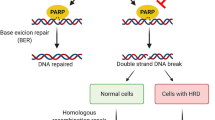Abstract
P-glycoprotein (Pgp) actively pumps a number of antineoplastic drugs, such as etoposide, out of cancer cells and causes multidrug resistance. Pgp is also expressed at the brush-border membrane of the small intestine under normal physiological conditions. We hypothesized that inhibition of intestinal Pgp might decrease the efflux of etoposide from the blood into the intestinal lumen, thereby, increasing the bioavailability of etoposide. The absorption of etoposide was studied using everted gut sacs prepared from rat jejunum and ileum. The addition of C219, a monoclonal antibody of Pgp, at 100 ng/ml or of 0.2 M 5′-adenylylimidodiphosphate, a nonhydrolyzable adenosine triphosphate (ATP) analog, increased the absorption of etoposide. Quinidine, an antiarrythmic agent, has been demonstrated to circumvent multidrug resistance in cell lines, possibly by interfering with Pgp function. Adding quinidine at 1 mg/ml to the everted gut sac increased the absorption of etoposide. In vivo absorption of etoposide was also studied by intraluminal perfusion of the drug in the small intestine of anesthetized rats. Intravenous infusion of quinidine at either 1 or 2 mg/h increased the serum level of etoposide in a dose-dependent manner. Intravenous infusion of etoposide at 0.2 mg/h resulted in luminal exsorption of the drug in the small intestine. The intestinal clearance of etoposide was 41.7 ± 7.2 ml kg−1, which decreased to 18.4 ± 3.9 ml kg−1 with the infusion of quinidine at 1 mg/h. The present data confirm that intestinal Pgp mediates the efflux of etoposide and that the use of Pgp-inhibiting agents such as quinidine may increase the bioavailability of etoposide.
Similar content being viewed by others
References
Bair CH, Huang JD (1992) Effect of theophylline on the intestinal clearance of drugs in rats. J Pharm Pharmacol 44: 483
Bair CH, Tang MJ, Huang JD (1992) Concentration-dependent exsorption of quinidine in the rat intestine. J Pharm Pharmacol 44: 659
Chow D, Shah J (1987) Stability-indicating high-performance liquid chromatography of etoposide at various pH conditions using a reversed-phase octyl column. J Chromatogr 396: 217
Croop JM, Raymond M, Harber D, Devault A, Arceci RJ, Gros P, Houseman D (1989) The three multidrug resistance (mdr) genes are expressed in a tissue-specific manner in normal mouse tissues. Mol Cell Biol 9: 1346
Delannoy IAM, Koren G, Klein J, Charuk J, Silverman M (1992) Cyclosporin and quinidine inhibition of renal digoxin excretion—evidence for luminal secretion of digoxin. Am J Physiol 263: F613
Endicott JA, Ling V (1989) The biochemistry of P-glycoprotein-mediated multidrug resistance. Annu Rev Biochem 58:137
Fojo A, Ueda K, Slamon DJ, Poplack DG, Gottesman MM, Pastan I (1987) Expression of a multidrug-resistance gene in human tumors and tissues. Proc Natl Acad Sci USA 84: 265
Ford JM, Hait WN (1990) Pharmacology of drugs that alter multi-drug resistance in cancer. Pharmacol Rev 42: 155
Georges E, Bradley G, Gariepy J, Ling V (1990) Detection of P-glycoprotein isoforms by gene-specific monoclonal antibodies. Proc Natl Acad Sci USA 87: 152
Gottesman MM, Pastan I (1988) The multidrug-transporter, a double-edged sword. J Biol Chem 263: 12163
Graaf WTA van der, Vries EGE de, Uges DRA, Nanninga AG, Meijer C, Vellenga E, Mulder POM, Mulder NH (1991) In vitro and in vivo modulation of multi-drug resistance with amiodarone. Int J Cancer 48: 616
Hsing S, Gatmaitan Z, Arias IM (1992) The function of Gpl70, the multidrug-resistance gene product, in the brush border of rat intestinal mucosa. Gastroenterology 102: 879
Huang JD (1990) Comparative drug exsorption in the perfused rat intestine. J Pharm Pharmacol 42: 167
Huang JD (1990) Role of unstirred water layer in the exsorption of quinidine. J Pharm Pharmacol 42: 435
Keller RP, Altermatt HJ, Donatsch P, Zihlmann H, Laissue JA, Hiestand PC (1992) Pharmacologic interactions between the resistance-modifying cyclosporine SDZ PSC-833 and etoposide (VP-16-213) enhance in vivo cytostatic activity and toxicity. Int J Cancer 51: 433
Lum BL, Kaubisch S, Yahanda AM, Adler KM, Jew L, Ehsan MN, Brophy NA, Halsey J, Gosland MP, Sikic BI (1992) Alteration of etoposide pharmacokinetics and pharmacodynamics by cyclosporine in a phase I trial to modulate multidrug resistance. J Clin Oncol 10: 1635
Pastan I, Gottesman M (1987) Multiple-drug resistance in human cancer. Engl J Med 316: 1388
Sehested M, Friche E, Jensen PB, Demant EJF (1992) Relationship of VP-16 to classical multidrug resistance phenotype. Cancer Res 52: 2874
Shah JC, Chen JR, Chow D (1992) Oral bioavailability and in situ absorption in rat. Int J Pharm 84: 223
Thiebaut F, Tsuruo T, Hamada H, Gottesman MM, Pastan I, Willingham MC (1987) Cellular localization of the multidrugresistance gene product P-glycoprotein in normal human tissues. Proc Natl Acad Sci USA 84: 7735
Wilson TH, Wiseman G (1954) The use of sacs of everted small intestine for the study of transference of substances from the mucosal to serosal surface. J Physiol (Lond) 120: 63
Wishart GC, Plumb JA, Morrison JG, Hamilton TG, Kaye SB (1992) Adequate tumor quinidine levels for multidrug resistance modulation can be achieved in vivo. Eur J Cancer 28: 28
Author information
Authors and Affiliations
Rights and permissions
About this article
Cite this article
Leu, BL., Huang, Jd. Inhibition of intestinal P-glycoprotein and effects on etoposide absorption. Cancer Chemother. Pharmacol. 35, 432–436 (1995). https://doi.org/10.1007/s002800050258
Received:
Accepted:
Issue Date:
DOI: https://doi.org/10.1007/s002800050258




